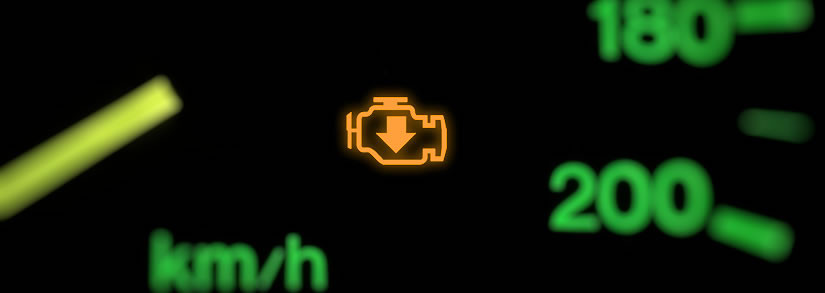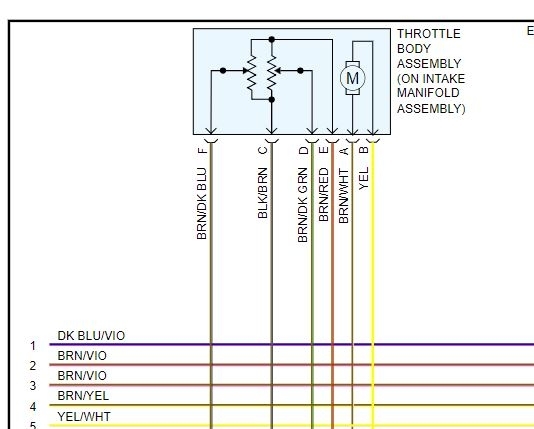One of the most frustrating things that can happen to a vehicle owner is when they experience a sudden loss in engine power.
This is especially true for those in colder climates, who often complain about reduced engine power when cold.
Various factors can cause low engine power, but colder weather than 35 degrees Fahrenheit is the most common.
If you’re driving an older vehicle, you will notice a sudden decrease in power, whereas, in modern cars, you’d see a reduced engine power warning sign that looks like this:

Low engine power can be a significant problem, especially if you’re in a hurry or need to get somewhere.
This problem can cause all sorts of issues, from being unable to drive up a hill to getting pulled over for under-speeding.
In this article, I’ll discuss the most common causes of reduced engine power in cold weather and how to fix those.
Table of Contents
What Causes Reduced Engine Power When Cold
In most Chevy and GM cars, reduced engine power warning sign is caused due to problem with the voltage transmission between the throttle and its sensors.
When it’s cold, connections and electronics get affected, due to which proper voltage is not passed on to the throttle body, and the engine power reduces significantly.
This is also referred to as the P2135 error code; you can read more about this error code here.
The best solution is to get the voltage supply checked by a technician, and if the voltages are incorrect, try cleaning the connections to check if this fixes the issue.
You can refer to this throttle body assembly diagram for additional help:

However, if the voltages are correct, you’d need to replace the throttle body, which costs between $200 and $500, depending on the car you drive.
Unfortunately, this is not the only reason that could lead to reduced engine power when cold. Other common causes include dirty fuel injectors, a bad fuel pump, a clogged catalytic converter, etc., which I’ll discuss below.
Dirty fuel injectors
Fuel injectors deliver fuel to the combustion chamber at the correct rate. If they become dirty or clogged, it can restrict the amount of fuel delivered and lead to reduced engine power when cold.
Moreover, dirty or clogged fuel injectors can cause the engine to misfire, leading to reduced power output.
In most cases, fixing this issue involves cleaning the injectors with a special cleaner, which costs around $20-$30.
However, if your fuel injectors are dirty or clogged, you may need to replace them entirely, costing upwards of $500, depending on your car.
Bad fuel pump
The fuel pump delivers fuel from the gas tank to the engine. It’s essential to the engine’s performance; if it wears out or not doing its job correctly, it can reduce engine power when cold.
In most cases, this issue can be fixed by simply replacing the fuel pump, which costs around $150–$400.
Clogged catalytic converter
The catalytic converter on your vehicle helps reduce emissions and is essential to your vehicle’s exhaust system.
Over time, the internal components of the catalytic converter can become clogged or damaged, leading to reduced engine power.
A new catalytic converter costs around $350, but you may find a used one for a lower price online.
Mass Air Flow sensor is faulty
Mass Air Flow (MAF) sensor measures the air entering the engine. This helps the engine decide how much fuel is needed and when to ignite the spark plugs.
A faulty MAF sensor can lead to reduced engine power in cold weather, as the engine won’t receive accurate information about air intake.
This issue can be fixed by replacing the MAF sensor, which costs around $100-$300.
Problem with Engine Control Unit (ECU)
Simple mechanical systems no longer control modern cars; they are controlled by a sophisticated computer system known as Engine Control Unit (ECU).
It is the main computer in your car, and it’s responsible for managing many of your vehicle’s functions, including engine performance and power. If there’s a problem with the ECU, it can cause low engine power.
To check the problem with your car’s ECU, you’d need access to an OBD-II scanner and advanced diagnostic software.
If the problem lies in the ECU, it can be fixed by either reprogramming or replacing it, which costs between $500 and $1000.
Battery problem
Lastly, a weak battery can also be the reason behind low engine power when cold.
If your car’s battery is weak or not providing enough voltage, it can lead to reduced engine power. Especially in cold weather, the battery might not be able to recharge itself, leading to reduced engine power.
The best way to check for a battery issue is to take your car for a diagnostic test at a professional mechanic shop. If the battery is discharged, you can simply get it charged and be on the way.
How To Fix Reduced Engine Power?
As we discussed, several different issues can cause low engine power. The best way to determine the exact cause is to take your car for a diagnostic test. This will help you identify the issue and choose the best fit for your vehicle.
In most cases, it involves replacing or cleaning specific components like fuel injectors. Still, in some cases, you may need to replace more extensive parts, such as the catalytic converter or ECU.
In any case, it’s best to consult a professional mechanic and let them take care of your car.
Frequently Asked Questions
Can I still drive my car with reduced engine power?
It depends on the problem and how severe it is. If the issue is minor, like a clogged fuel injector, you may be able to drive your car for short distances without any issues. However, if the problem is more severe and causes reduced power output, it’s best to get it fixed before driving your car.
Why does my car lose power when it is cold?
In colder weather, connections and electrical components of your car’s engine can become stiff, which can cause a loss of power. This is particularly evident when the engine hasn’t been running for a while or has just been started up.
What are the symptoms of a failing throttle body?
Symptoms like a sluggish engine, reduced power output, and poor acceleration usually accompany a failing throttle body. Other signs include jerky starts, stalling out, and fluctuating idle speed.
What does error code P2135 mean?
Error code P2135 usually indicates a faulty Throttle Position Sensor (TPS), responsible for controlling the engine’s power output. The TPS helps the engine decide when to ignite the spark plugs and how much fuel is needed so that a faulty one can cause reduced power output in cold weather.
How much does it cost to fix engine power reduced?
It depends on what’s causing the low engine power. Sometimes, it may be something as simple as cleaning a component or replacing faulty wires for just a few dollars. On the other hand, if you need to replace more prominent parts, such as the ECU or catalytic converter, it can cost up to $1000.

Robert Bacon is a car nerd and automotive lover who has dedicated his life to understanding the inner workings of vehicles. He holds a degree in mechanical engineering and has spent years working as a mechanic and engineer for some of the world’s top car companies. In his spare time, he enjoys writing about cars on this blog and tinkering with his 2016 Toyota Mirai in his garage.